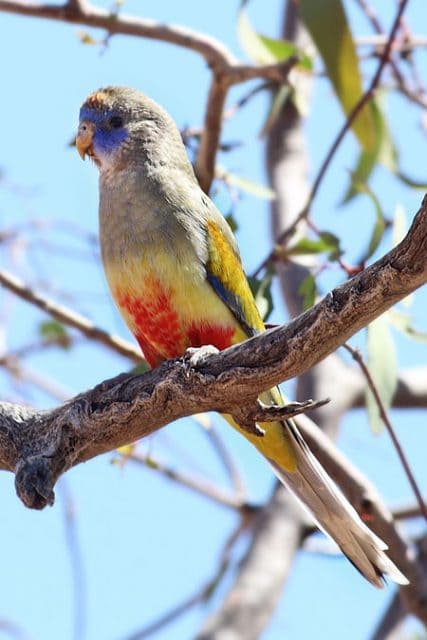Type the name of the breed you're looking for below
[wpdreams_ajaxsearchlite] Don't see the breed your're looking for? Click here and let us know!
Eastern Blue Bonnet
| Origin | Bluebonnets are found in the interior of southeastern and central-southern Australia. The range extends from northern Victoria to southern Queensland in the east across to southeastern Western Australia in the west. |
| Size | Can grow up to 11 in(28 cm) |
| Lifespan | Can live 15+ years |
| Noise | Moderate, like most parakeets this species is capable of mimicry. |
| Characteristics | These birds can be incredibly playful by nature. The Eastern bluebonnet is a medium sized parrot with prominent crest-like head feathers. All bluebonnets have a mostly olive-grey to brown upperbody, foreneck and breast, with the outerwing and leading edge to the folded wing being dark blue, a blue forehead and face. The bill is pearl grey, the cere is light grey, iris colour is brown-grey, and the feet and legs are dark grey. There is no seasonal variation in the plumage and there are no similar looking species to the bluebonnet parrot. |
| Interaction/Time Requirements, Diet, Supplies Needed | Aviaries are sold ready for home assembly. Parrots do well in aviaries and cages. They don't like to be in crowded spaces and will sometimes be aggressive towards other birds if they don't have enough space. Parrots can also be hand reared, provided that they have a large cage and are taken out of their cage on a daily basis to prevent boredom, as it may result in the parrot pulling out its feathers to occupy itself. They require a warm habitat for the winter months. Do not allow your birds outdoors until all signs of frost are gone. Space is important and indoor cages should be as large as possible. A large cage is required even if the bird is going to spend lots of time out of its habitat with you. They eat a foreign seed mixture that contains various millets and other small seeds such as niger. You need to change food and water twice daily, and clean the cage at least once a day, replacing toys and broken climbing branches. |



